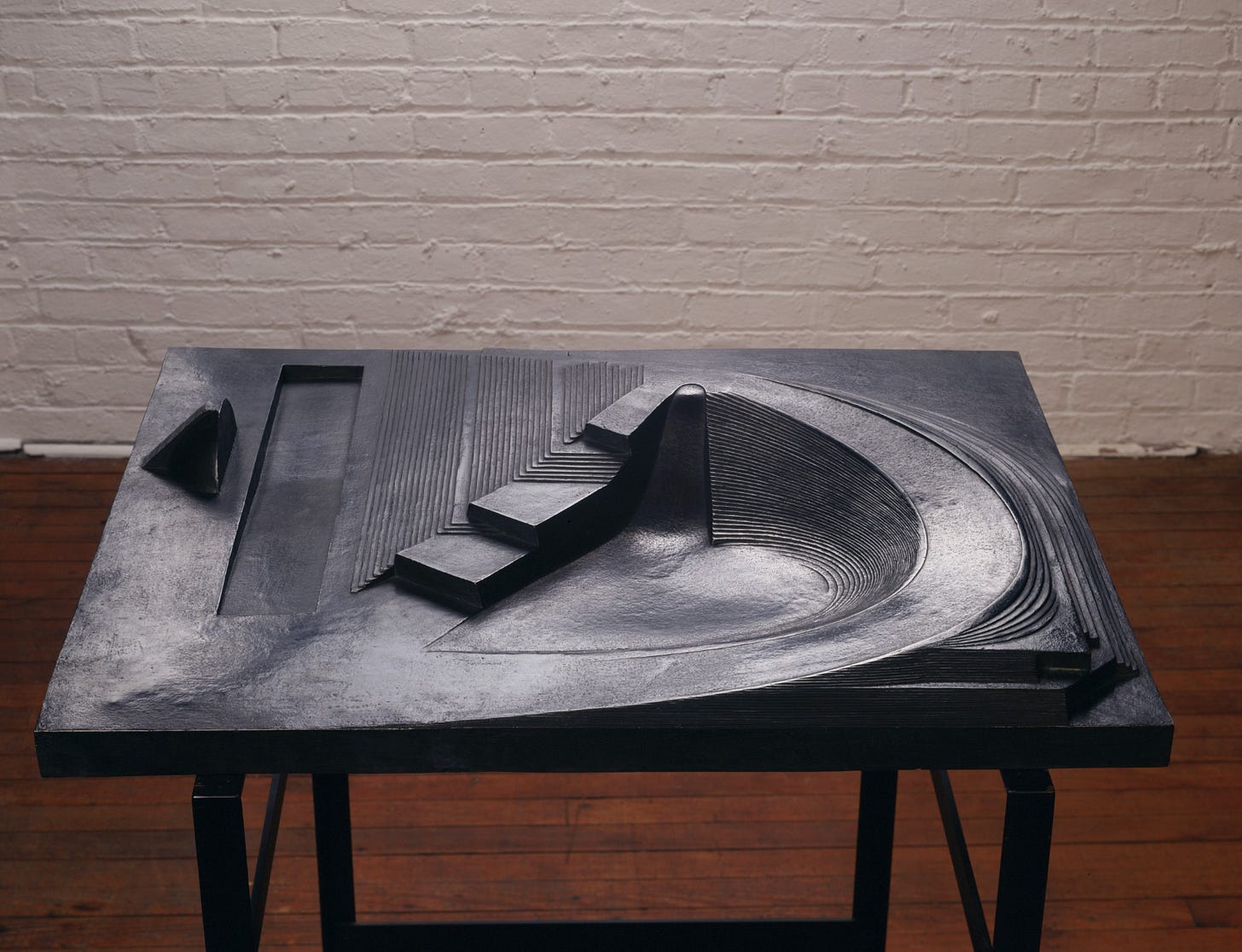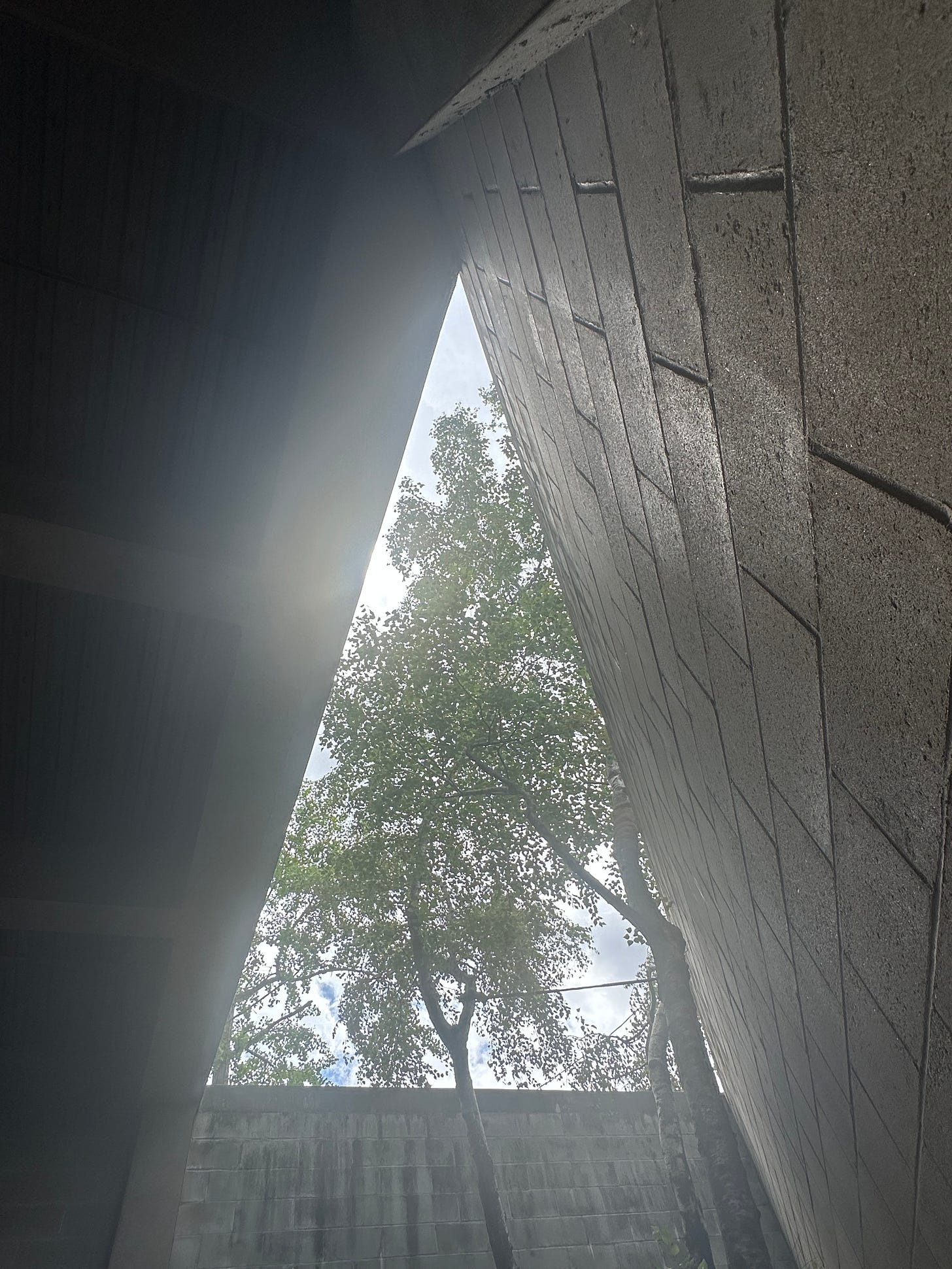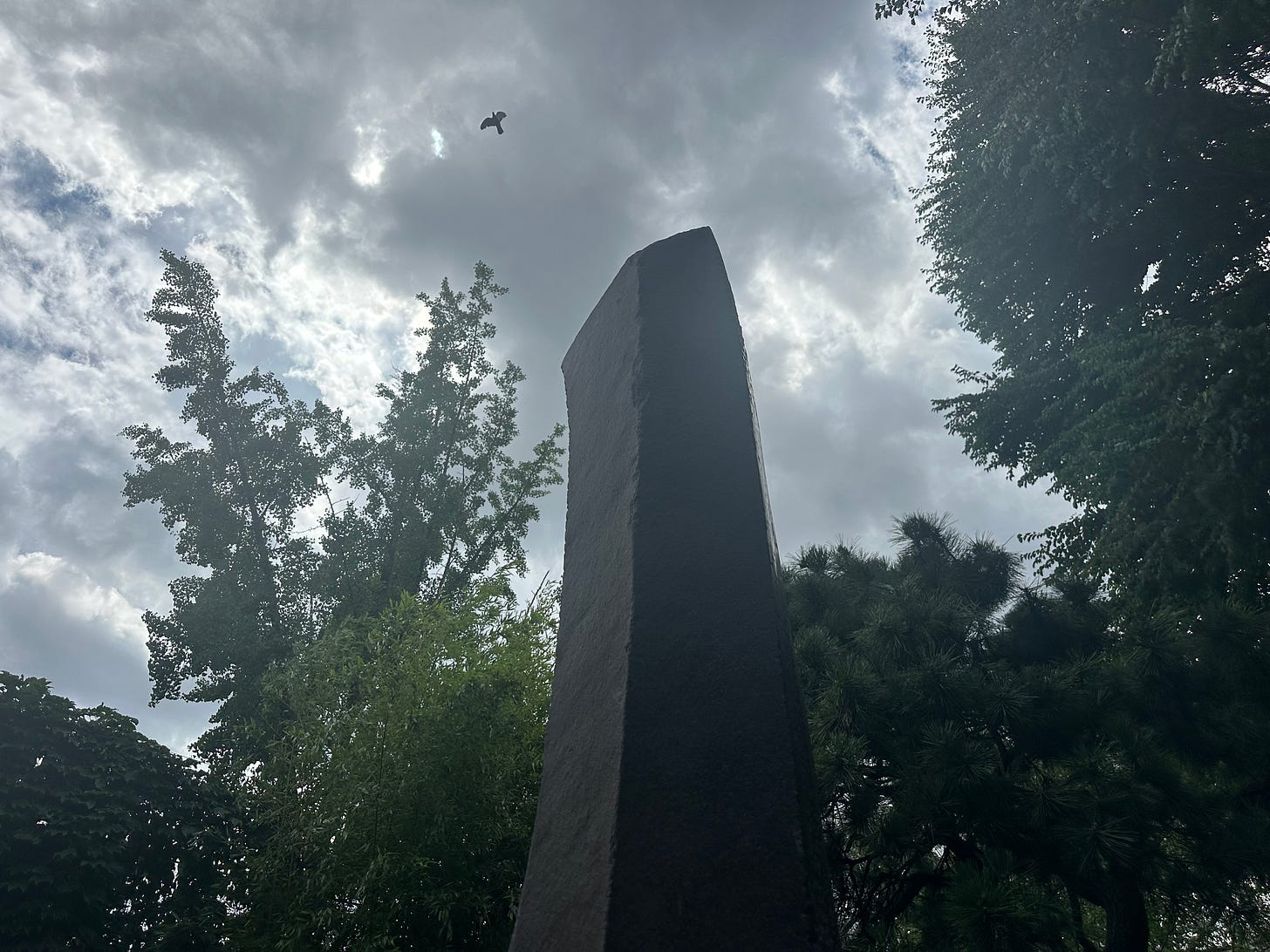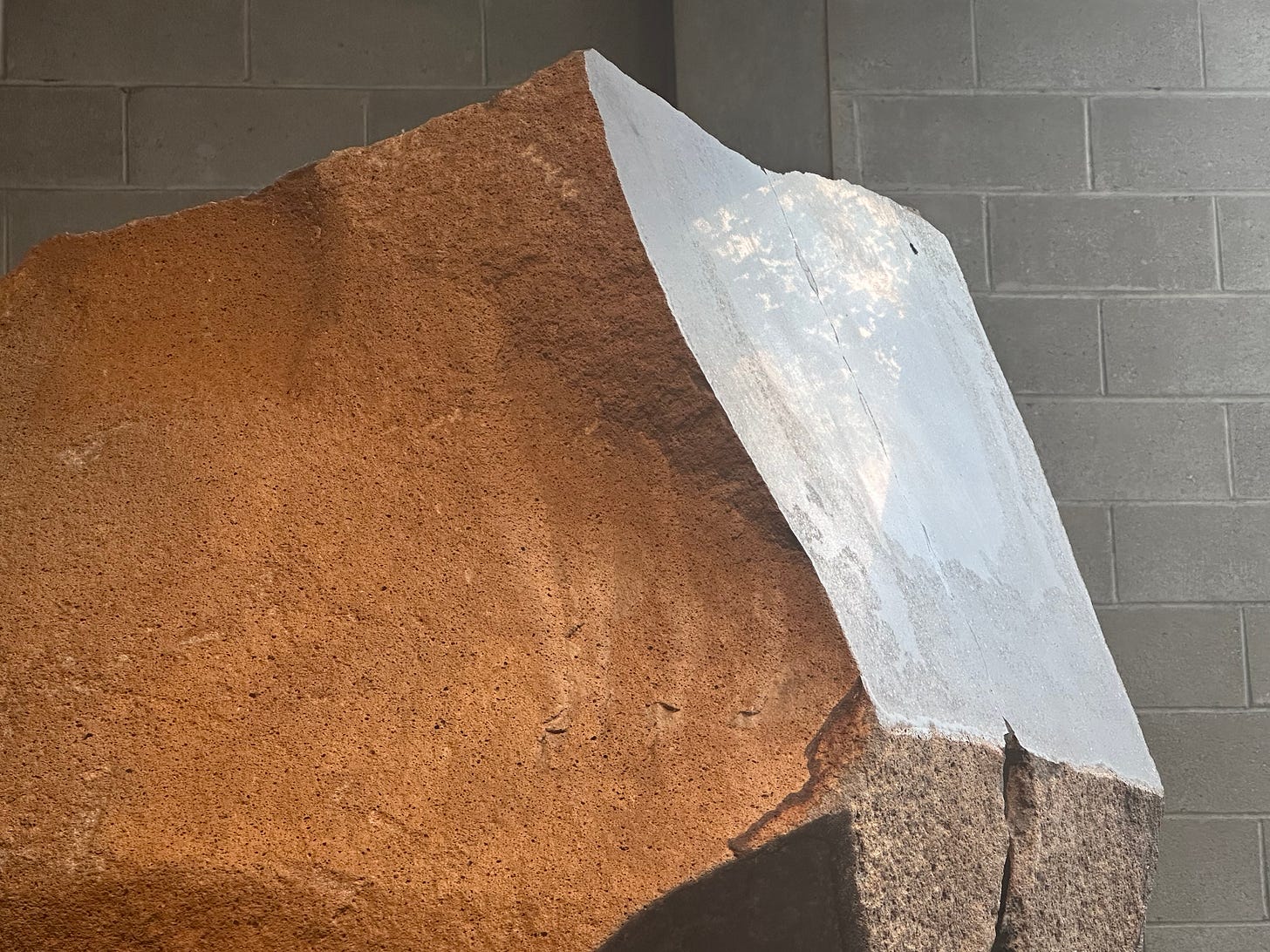The Noguchi Museum is close to my heart, perhaps because it’s close to home. Also because there is a particular atmosphere that is hard to put into words until you experience it. I happened to arrive the other day just as a free weekend tour was getting underway which helped me see the museum in an even more inspirational light.
The museum was created by Japanese American sculptor Isamu Noguchi. He opened it in 1985, three years before he died. Museum exhibits tend to have a temporariness about them - with an artist’s work on display for a few months, say - and he was drawn by the idea of having a permanent place for his work. Which reflects no small ego of course, but then why the hell not, if you’ve built up a lifetime of work and can afford a museum because some of your designs have scaled to mass-production?
Three things struck me on this visit.
One was how Noguchi’s work reflects the inseparability of our material and spiritual worlds, and how humans and our creations are part of nature. A corner of the museum is exposed to the elements so that natural light, weather and sounds interact with the sculptures (crossing planes, birdsong, wind) - while in the garden there’s no separation at all.
The second was the language/s of the stone itself, showing marks from when it was excavated, handled or moved, in countries that include Japan and the US, Italy and Uruguay.
And speaking of language, Noguchi intentionally kept the signage and labelling in the museum minimal. His sculptures have names that hint at meanings but other than that their interpretation is wide open to the viewer.
The third thing that struck me was how art plays with time. Pieces created during and in the wake of the second world war like This Tortured Earth and Lunar Infant convey human fragility and destruction in ways that are all too resonant today.
And bronze casts of bold designs for playgrounds - including “Play Mountain” that was designed to fill a whole of a Manhattan block but never came to fruition (Robert Moses, surprise-surprise, was an obstacle to many of Noguchi’s public space ideas) mean that the concept outlives its creator and can inspire future designs in unpredictable ways.






